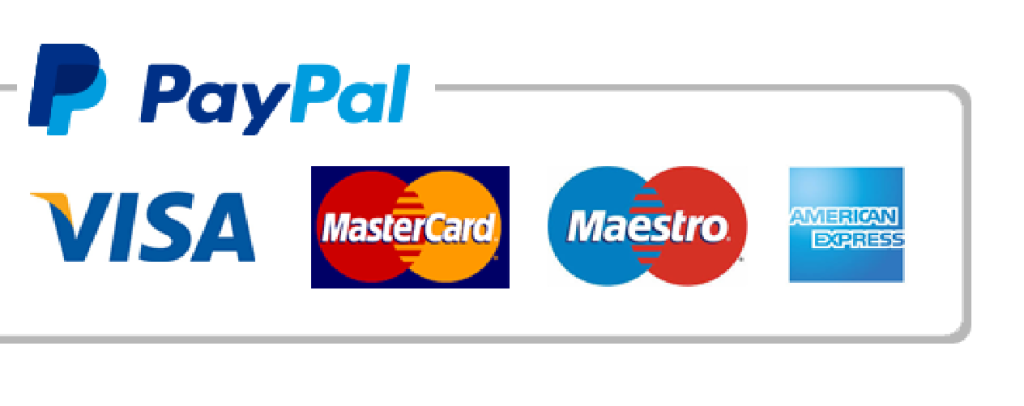For an e-commerce business, your website is a virtual storefront for your customers. Just like a store you’d visit in real life, your e-commerce website should reflect the tone and voice of your brand. You’ll want to make sure the user experience is intuitive.
With e-commerce giants like Amazon, eBay, and Etsy, there is ample opportunity for emerging brands to participate in the e-commerce space. A website displays your product offering and brand identity, linking to social media and digital content to boost sales.
Let’s dive into this guide to building an e-commerce website that suits your product or service.
How to build an e-commerce website
From entering your site to purchasing items, your customer’s e-commerce experience should be enjoyable and seamless. Here’s a step-by-step guide on how to build a website.
1. Define your e-commerce business model.
Consider your business. Perhaps you’re pivoting from a brick-and-mortar store. What do you sell? Who is your target market?
Begin by defining your business model:
- Business-to-customer (B2C): The most common model, in which a business sells products or services directly to consumers.
- Business-to-business (B2B): Businesses sell products or services to other businesses.
- Customer-to-customer (C2C): Online marketplaces that connect consumers to exchange and sell goods or services.
- Customer-to-business (C2B): Individuals sell their goods or services to companies.
Read more: B2B Marketing: Definition + Strategies
And consider how you plan to ship your products, if you have any:
- Direct-to-consumer (D2C): Sell your products directly to customers, without the help of wholesalers or retailers.
- Drop shipping: Set up a storefront (website) so customers can pay by credit card or PayPal, sourcing from a supplier that manages inventory and packaging. Drop ship businesses are quick and inexpensive to start.
- Wholesale: Purchase products in bulk at a discounted rate from a retailer.
- Private label: Hire a manufacturer to create a product to be sold exclusively by you.
- White label: Put your name and brand on a generic product that you purchase from a distributor.
- Subscription: Deliver products, such as pet food or fresh vegetable boxes, on a monthly or weekly basis to loyal customers who prioritize convenience.
3. Start customizing your website.
Now, choose a template for your website. Different template styles, colors, and font styles will change your customer’s experience of the website, so keep this in mind as you design your site. You may want to hire a web developer or graphic designer to build your site to get the most professional aesthetic and functionality, though this often costs much more than building a site yourself.
It might help to use a pen and paper to draw out your wireframe or a detailed overview of your website’s navigation. Consider including these elements in your roadmap:
- Homepage (what customers will see first)
- Category pages, including a product page for browsing and selecting
- Shopping cart and checkout pages
- About us (who you are, what you sell, your brand’s mission)
- Contact information
- Search engine within your site
- Email subscription form
- Legal information, such as terms and conditions and privacy policy
Research your competitors’ websites for inspiration. When you feel comfortable, start experimenting with the platform to customize your online store. You’ll want to make sure users can navigate your virtual store easily as they learn more, register for an account, and add items to their shopping cart.
This one-hour guided project provides step-by-step instructions for creating a Shopify site:
4. Set up your online store.
It’s time to load your products onto the page. High-quality product photos and brand-consistent product descriptions will help your products stand out from the competition. If you have a broad offering, you may want to separate the page into product categories, such as by color, design, or product type. You may want to allow customers to sort or filter by price, new arrivals, or rating.
Assuming you have your initial launch products ready, you’ll want to prepare shipping and payment methods to ensure accurate and convenient customer service. Your inventory should match what’s available on the website, and the payment method should be connected to your business bank account. You can easily set up a payment processor on sites like Shopify or with external add-ons like Square or Stripe.
5. Launch your website.
After you’ve finalized your website, it’s ready to launch! Experiment with digital marketing to attract customers. Create social media platforms to post lifestyle images of your product or service. This is your chance to share with the world what you’ve been creating.
A launch promotion using sponsored posts or ads can help boost your brand awareness and penetrate your target audience. Google and Facebook Ads can help your business gain traction and exposure in its early days, while content marketing (such as emails and newsletters) can build a following.
How much does it cost to create an e-commerce website?
Creating an e-commerce website doesn’t have to be expensive. You can build a simple site first and then enhance it with a designer or developer later on. To get started lean, here’s what you’ll need:
- E-commerce platform: A basic Shopify plan is $39 per month, or $468 for the year, and comes with everything you’ll need to launch your online business [1]. With these types of all-inclusive platforms, you can create a fully functioning website in just a few hours.
- Domain and name hosting: Some platforms include the option for domain name and hosting, while other platforms require them to be purchased separately. A domain can cost as little as $1 a year, while hosting can range from a few dollars to $700 per month.
Once your business starts selling and becoming profitable, you may want to upgrade your branding designs, switch to a regular Shopify plan, or work with a developer to design a fully customized website from scratch. However, plenty of plug-ins are available to enhance Shopify for free.
E-commerce website tips
As you prepare to sell products and services through your site, keep these tips in mind to get the most out of your online store.
Display customer reviews.
Make it easy for customers to post their reviews on your site so that new site visitors can make informed purchase decisions. Product reviews can improve your brand’s reputation and increase your sales. According to a report by Spiegel Research Center, online reviews can increase a site’s conversion rate by 270 percent [2].
Make use of stock images.
While product images can help potential customers gauge the attributes of a physical product before making a purchase, you may find that using stock images can enhance your e-commerce website. In addition, high-quality stock images can be an affordable way to convey your brand’s aesthetic, values, and mission without having to hire a professional photographer.
Include white space in each webpage.
White space, also known as negative space, refers to empty space between or around design elements or content on a webpage. Including white space can improve your site’s readability as visitors scroll pages, establish a visual hierarchy among elements, contribute to a modern aesthetic, and help users process information more easily.
Improve your e-commerce SEO.
E-commerce SEO practices, such as using keywords strategically throughout your site’s copy or improving its architecture, can help your site rank higher in internet search results without the use of paid ads. In addition, e-commerce SEO enables you to draw more visitors to your site and lead them to make a purchase.
Build a robust online presence.
In addition to your e-commerce site, you’ll need to build a presence online to increase visibility and brand awareness. This can include developing social media accounts, connecting with influencers and affiliate marketers, hosting online events related to your offerings, collaborating with other brands, and engaging in online communities.
Stay abreast of e-commerce trends.
At all points along your e-commerce journey, it’s a good idea to monitor trends in e-commerce so that you can update your site to reflect what consumers are looking for. Trends include new e-commerce technologies, better user experiences, more effective marketing strategies, and more sophisticated use of data to make decisions.



